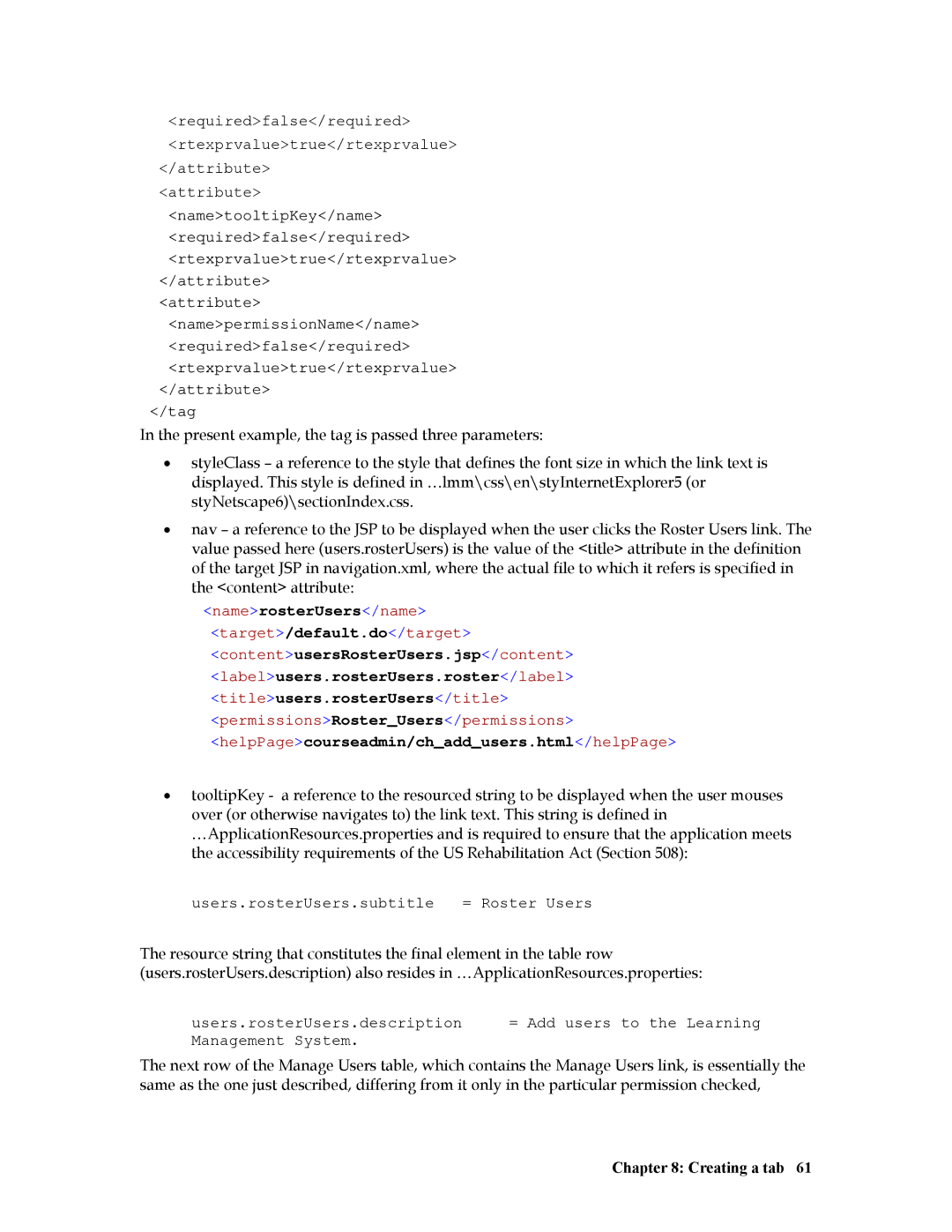<required>false</required>
<rtexprvalue>true</rtexprvalue>
</attribute>
<attribute>
<name>tooltipKey</name>
<required>false</required>
<rtexprvalue>true</rtexprvalue>
</attribute>
<attribute>
<name>permissionName</name>
<required>false</required>
<rtexprvalue>true</rtexprvalue>
</attribute>
</tag
In the present example, the tag is passed three parameters:
•styleClass – a reference to the style that defines the font size in which the link text is displayed. This style is defined in …lmm\css\en\styInternetExplorer5 (or styNetscape6)\sectionIndex.css.
•nav – a reference to the JSP to be displayed when the user clicks the Roster Users link. The value passed here (users.rosterUsers) is the value of the <title> attribute in the definition of the target JSP in navigation.xml, where the actual file to which it refers is specified in the <content> attribute:
<name>rosterUsers</name>
<target>/default.do</target>
<content>usersRosterUsers.jsp</content> <label>users.rosterUsers.roster</label> <title>users.rosterUsers</title> <permissions>Roster_Users</permissions> <helpPage>courseadmin/ch_add_users.html</helpPage>
•tooltipKey - a reference to the resourced string to be displayed when the user mouses over (or otherwise navigates to) the link text. This string is defined in …ApplicationResources.properties and is required to ensure that the application meets the accessibility requirements of the US Rehabilitation Act (Section 508):
users.rosterUsers.subtitle = Roster Users
The resource string that constitutes the final element in the table row (users.rosterUsers.description) also resides in …ApplicationResources.properties:
users.rosterUsers.description | = Add users to the Learning |
Management System. |
|
The next row of the Manage Users table, which contains the Manage Users link, is essentially the same as the one just described, differing from it only in the particular permission checked,
